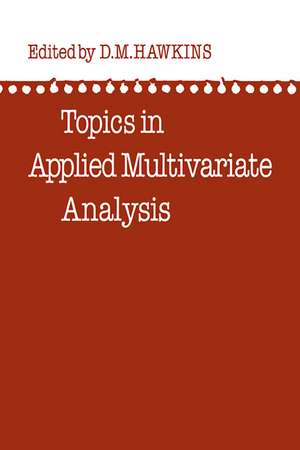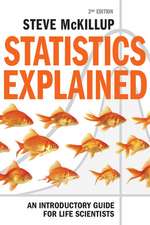Topics in Applied Multivariate Analysis
Autor D. M. Hawkinsen Limba Engleză Paperback – 26 noi 2008
Preț: 354.63 lei
Nou
Puncte Express: 532
Preț estimativ în valută:
67.86€ • 70.01$ • 56.63£
67.86€ • 70.01$ • 56.63£
Carte tipărită la comandă
Livrare economică 26 martie-09 aprilie
Preluare comenzi: 021 569.72.76
Specificații
ISBN-13: 9780521090704
ISBN-10: 0521090709
Pagini: 376
Dimensiuni: 152 x 229 x 21 mm
Greutate: 0.55 kg
Editura: Cambridge University Press
Colecția Cambridge University Press
Locul publicării:Cambridge, United Kingdom
ISBN-10: 0521090709
Pagini: 376
Dimensiuni: 152 x 229 x 21 mm
Greutate: 0.55 kg
Editura: Cambridge University Press
Colecția Cambridge University Press
Locul publicării:Cambridge, United Kingdom
Cuprins
1. Discriminant Analysis L. Paul Fatti, Douglas M. Hawkins and E. Liefde Raath; 2. Convariance Structures Michael W. Browne; 3. The Log-Liner model and its application to multi-way Contingency Tables Theunis J v W Kotze; 4. Scaling a Data Matrix in a Low-Dimensional Euclidean Space Michael J Greenacre, Leslie G. Underhill; 5. Automatic Interaction Detection Douglas M. Hawkins and Gordon V. Kass; 6. Cluster Analysis Douglas M. Hawkins, Michael W. Muller, J. Andri ten Krooden.
Descriere
Multivariate methods are employed widely in the analysis of experimental data but are poorly understood by those users who are not statisticians.











